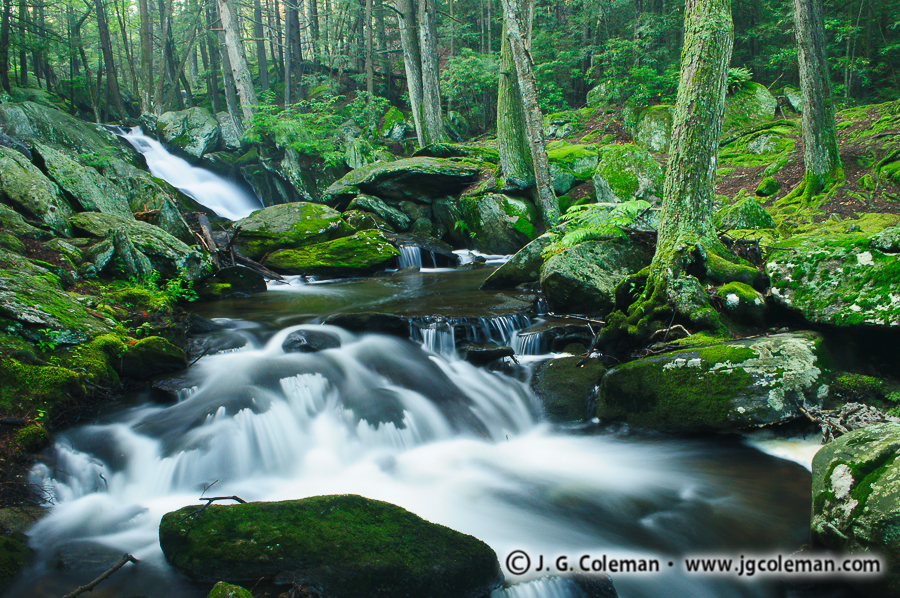About Buttermilk Falls Preserve
Standing beside Buttermilk Falls, it would be tempting to conclude that this stretch of Hancock Brook has forever been untouched by human hands… that the waterfall and cascades have always managed to escape the transformative, and oftentimes destructive, effects of society’s progress. However, just as it is with most natural places in modern Connecticut, this is merely an illusion brought about by the hand of time which has swept away nearly all traces of the past. Settlers and farmers of European descent have been overlooking the falling water of Hancock Brook for ages; Native Americans probably encountered these waterfalls during their travels for thousands of years, long before the concept of the “New World” even existed to the English and the Dutch.
Though, it wouldn’t be until Europeans arrived that Buttermilk Falls began appearing in written records. Lani B. Johnson, author of Plymouth, Connecticut, relates that the area of Buttermilk Falls was once tamed by a dam and harnessed to turn a waterwheel that supplied power for a stream-side sawmill. “Buttermilk Falls was affiliated with both the Tolles Farm and nearby Basset Farm for two-hundred years,” writes Johnson.
Today, The Nature Conservancy owns and protects the roughly 12-acre parcel of land upon which Buttermilk Falls and the other cascades of Hancock Brook can be found. The old waterwheel and sawmill vanished long ago along with nearly every trace of farmland that may once have lain within range of the watercourse. Owing to its ultimate abandonment as a place of industry and agriculture, Buttermilk Falls probably looks more “natural” in modern times than it has for centuries.
Interestingly, the comparison between water and milk is not a novel one, for early inhabitants of the American Northeast were actually quite fond of likening wispy, whitewater cascades to flowing buttermilk. In New York State alone, there are at least a dozen different waterfalls all over the countryside that go by the name “Buttermilk Falls”. Connecticut has reserved this name only for two waterfalls (the other can be found in Norfolk) and both Maine and Vermont each claim only one “Buttermilk Falls”. But there’s no question that relating wispy whitewater cascades to spilled buttermilk must have been a rather natural comparison in earlier times; for some reason, I don’t think that Northeasterners would make the connection so effortlessly these days.

